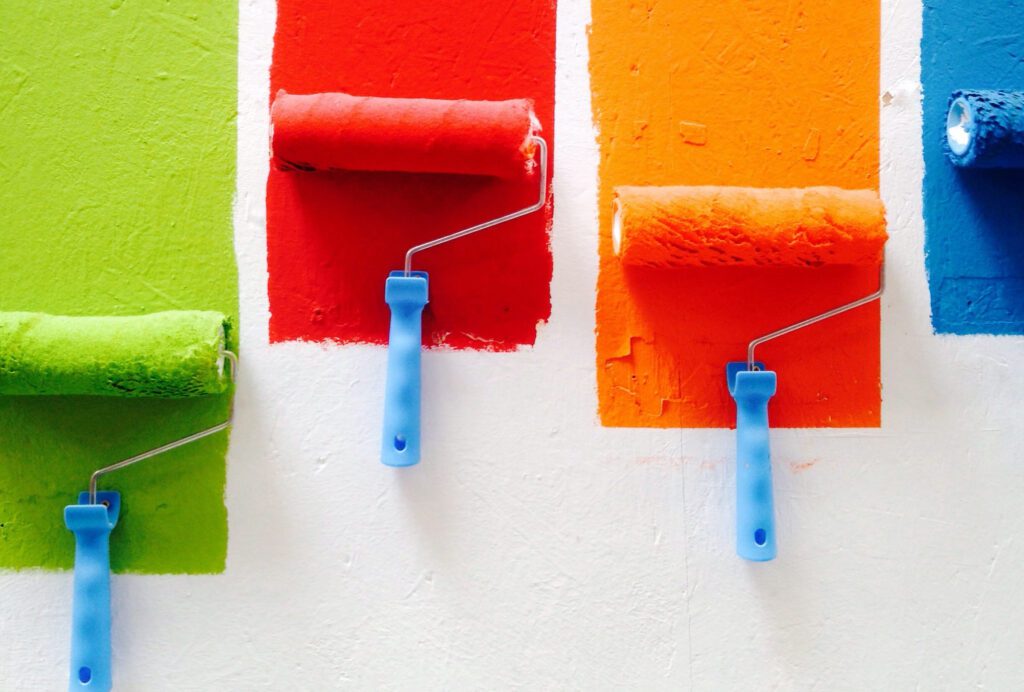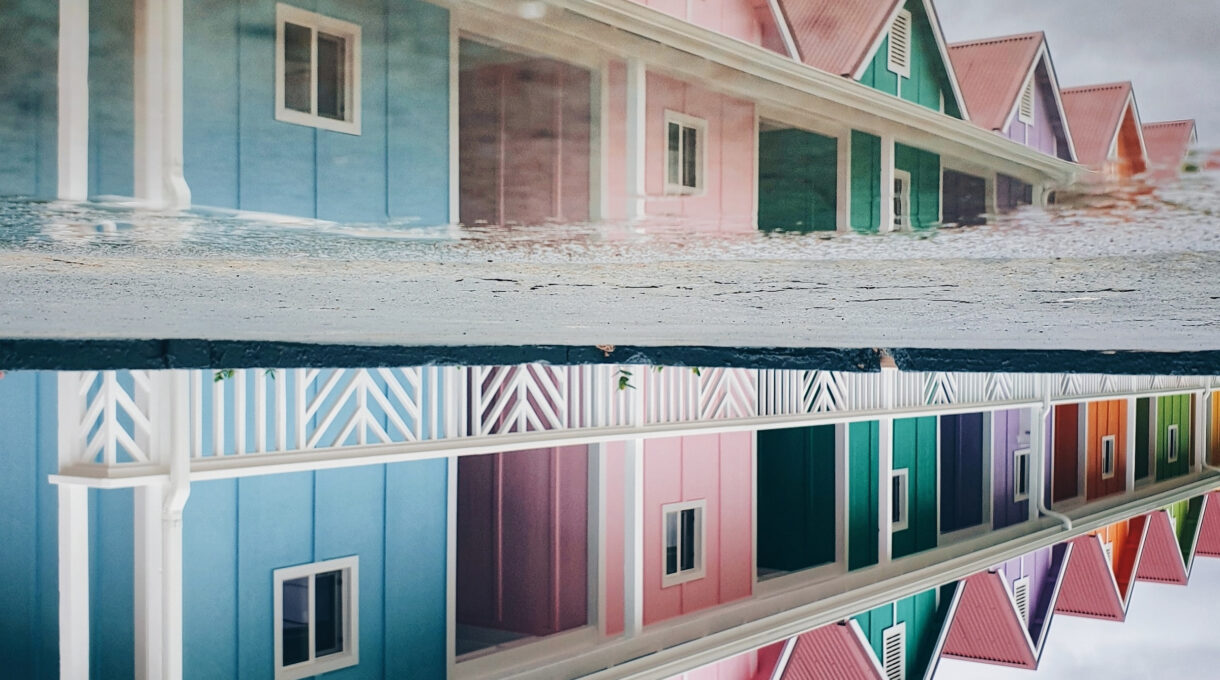In the battle to preserve a home’s exterior appeal, protecting your paint job from weather and wear becomes a top priority. The elements can be unforgiving, subjecting your work to relentless challenges that threaten its integrity. So, let’s get into the strategies that go beyond aesthetics, ensuring your paint stands strong against the test of time.
Choose the right paint
Choosing the right paint for your project is a critical decision that can significantly help or hinder your efforts to protect your paint job. This consideration becomes even more vital when facing challenging environmental factors like high humidity or extreme temperatures. In such conditions, the choice of paint type can make or break the outcome. When dealing with high humidity, you’ll want to opt for latex-based paints. They are formulated to resist moisture, reducing the risk of peeling or blistering. They adhere well to surfaces, ensuring a durable finish that can withstand humid conditions without compromising the aesthetics.
On the other hand, when you’re working in areas with extreme temperature fluctuations, oil-based options come to the forefront. They form a robust protective barrier, making them ideal for climates where temperatures can vary drastically.

Surface preparation
Surface preparation is a foundational step to protect your paint job, and its significance cannot be overstated. Properly preparing surfaces ensures that paint adheres well, creating a smooth, long-lasting finish. Thorough cleaning is essential to remove dirt, dust, and grease, as these can affect adhesion. Scraping off old, flaking bits and sanding rough spots also helps create a uniform surface. Repairing cracks, holes, or imperfections with filler is crucial for a flawless end result, too. Finally, applying a primer improves adhesion and seals porous surfaces.

Prime the surface
Prime the surface to ensure you can protect your paint job long-term. It enhances adhesion and even provides a uniform base for your chosen color. To ensure a successful priming process:
- Select the appropriate primer based on your surface type and paint choice.
- Before application, make sure the surface is clean, dry, and free from any dust or debris.
- Sanding may be necessary to smooth out imperfections in this process, too.
- When it’s time to prime, apply the product evenly, using a brush or roller for even coverage.
- Let the primer dry completely before moving on to the next phase, following the manufacturer’s recommended drying times.
And, of course, consider partnering with businesses like Pack & Go Movers NY, who can help you quickly and efficiently clear out the rooms you need to work on to secure a more optimal working environment.
Select the appropriate paint application method
Select the right paint application method and learn how it can improve your painting business. The choice between a brush, roller, or spray gun depends on various factors of your current job. Brushes are ideal for precision and detail work, while rollers cover larger areas more efficiently. On the other hand, spray guns offer a smooth, even finish for extensive projects. Consider the project size, surface type, and the desired finish when making your selection. Also, always use high-quality tools and equipment to ensure the best results.
Protecting your paint from harsh weather
Shield your paint from harsh weather to protect your paint job, and this is even more important if you want to go beyond painting just inner walls. Weather elements like rain, snow, UV rays, and extreme temperatures can wreak havoc on your exterior. To combat these challenges, consider using specialized exterior paints designed to withstand such conditions. Applying protective coatings and sealants can also provide an additional layer of defense, preserving your work’s integrity. Cleaning the exterior walls periodically to remove dirt and grime can also help extend the longevity of your work, but it’s down to the homeowners.

A perfect way to attract more clients
With what we covered on the ways to protect your paint job from weather and wear, it’s evident that safeguarding a home’s exterior is a lot of work. By choosing the right paint, preparing surfaces meticulously, and embracing a consistent maintenance routine, you can fortify them against the elements. The battle against weather and wear may be ongoing, but with these strategies, your paint jobs will continue to shine brilliantly for years to come.


I appreciate the information about how paint can protect a surface from the different severities of the environment. I like how you mentioned that preparation is key. Primer is an integral part of the painting process and will determine if your paint job will last long term. I also found the paint selection process interesting. I definitely agree that depending on your geographical location will determine the type of paint to use to protect from that specific environment.
Don’t cut corners using the wrong primer for the task at hand
Paint lighter colors on southern exposures
Preparation is always key in every job and this info really outlined that very well!
Preparing the surface takes a good plan and the time to get it done. It is best to explain the process and expectations to the home owner so everybody can understand what goes into the work. The price should include the prep time and appropriate materials to do the job well.
I put in my contracts the below the steps of prep. I’m a one craftsman company so they see every step happen
Surface Preparation / repairs: Pressures wash stucco, soffits, fascia and block walls by entry with 3500 psi with rotary tip. Fill gaps between window frames and stucco with elastomeric textured caulk. Remove landscape from base of walls, and stem walls as needed. Prime new wood under soffits and drip edge. Cut off roofing staples on underside of soffits. Prime fascia wood with PPG Urethane Acrylic Wood Stabilizer. Fill all wood splits and cracks on fascia with elastomeric patch. Caulk open joints between stucco, drywall and soffits or ceilings as needed. Prime stem walls where complete paint failure is occurring with Dry-Lok water proofer and seal top edge of entry walls. Fill all stucco cracks with elastomeric textured stucco patch. Seal tops of pop-out with Super-Loc masonry bonding primer. Seal-Krete will be added to paint products to add in adhesion and sealing. New garage door will be sanded prior to painting
Arizona suns UVs destroy a minimum on the average ¼ mil of paint per year. Best practices are to apply a fresh coat on south and west surfaces before sever chalking. Surfaces that do not experience direct sun will hold out much longer and will not require maintenance painting for many years. Color selection will determine fading also.
2 COAT SYSTEM = 2 dry mil paint film, 8 years on sun exposed surfaces. Repaint in 6 years.
Preparation is definitely the key to a good job. It all starts there.